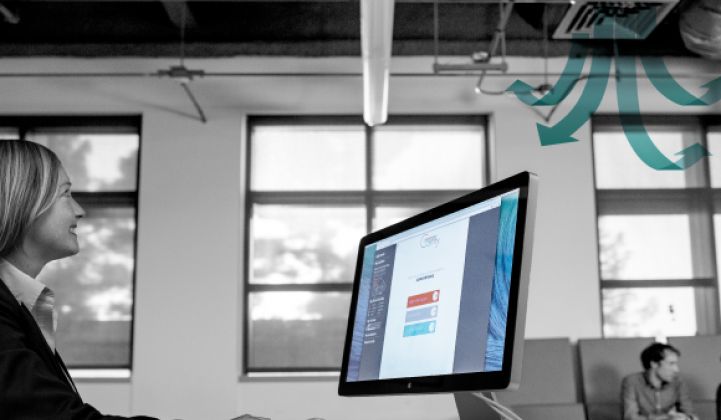Building Robotics is a two-year-old startup bringing efficiency to commercial buildings by focusing on the people inside.
Until now, that focus has been about climate control. The software company allows individual office workers to have input on the temperature in their office via their mobile phones. Building Robotics says the increased transparency, coupled with algorithms that can learn people’s preferences, lead to more efficient buildings, happier workers and higher productivity.
The Oakland, Calif.-based startup is now expanding with an ecosystem it has dubbed "Plus Comfy" that tackles more than just office temperature. The initial partners include CommScope’s Redwood Systems, Intel, Lutron and View.
The added capability will allow for input on computer-screen glare from direct sunlight or misdirected office lights. The ultimate goal is to give employees more control over their work environments. As with many successful energy controls in the emerging smart home market, the primary selling point is comfort and not energy savings.
“We talk about it as comfort-as-a-service,” said Andrew Krioukov, co-founder and CEO of Building Robotics. The approach has enticed investors. The startup raised $5.5 million last year on top of a previous $1.1 million seed round.
“There’s a ton of existing control capability that is in most large buildings,” he added. “Despite that, it’s not being used to its potential.”
More capabilities are coming. The increase in networked lighting systems and sensors means more hardware can be leveraged over time. Building Robotics is using a gateway from Intel that brings together disparate hardware and a building management system into one place for the software to leverage. The increase in open-source platforms makes it easier to work with different building technologies than it has been in the past.
On the consumer side, Comfy has also been fine-tuning its user interface on the app, which Krioukov said has been very sticky. On average, more than 70 percent of employees use the app and at least half of those use it at least every two weeks.
Will it create conflict between people with different temperature tolerances?
“You know exactly who you’re sharing with and who is in your zone,” said Krioukov. Building Robotics has found that people are only asking for opposite temperature settings less than 3 percent of the time.
“It’s a technical solution with a human element,” he added. The app has reduced energy use by more than 20 percent for some of its clients, such as Johnson Controls.
Building Robotics believes the human element will give it an advantage in the crowded intelligent building space, said Krioukov.
In other smart building news, Enlighted, a lighting network-as-a-service company, launched new applications for demand-driven HVAC and visualization tools for building managers.
Like Comfy, Enlighted says its Aire app can provide optimal comfort for employees. Unlike the Building Robotics software (and similar to other offerings in the market), however, it relies on sensors, not human input.
Enlighted’s new apps will be leveraged by real estate firm JLL, which has a property portfolio comprising 3.4 billion square feet. Building Robotics is also working with some real estate firms, such as Vulcan Real Estate, but is focusing its sales efforts on building tenants.



